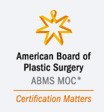Over time, factors like stress, sun and gravity combine to cause a visible change in the skin of the face and neck. Creases develop around the mouth, sagging changes the contours of the jaw line and fat deposits beneath the skin of the neck form loose folds. A facelift, also known as a rhytidectomy, reverses this damage by trimming excess skin, eliminating fat and tightening muscle. In doing so, it rejuvenates the face, often erasing years from the patient’s appearance.
“As facial aging occurs, the V shape of a youthful face changes to a W shape, and you start to see increased jowling and loose hanging skin. Surgeons typically try to restore the V shape of youth by artfully manipulating facial muscles, skin and fat to create balanced, youthful but natural results,” explains Dr. Shahram Salemy, a distinguished, multi-award-winning plastic surgeon who advises patients considering a facelift to study their surgeon’s before and after photos to get a sense of the results the surgeon is capable of achieving.
While the procedure once resulted in a tightened or stretched look, today’s facelifts use a variety of surgical strategies to create a more natural appearance. The outpatient procedure generally takes approximately two to three hours and can be performed under general anesthesia or sedation. After surgery, the incisions are bandaged. These protective coverings will typically come off in one to three days. Sutures are removed in a week, while surgical clips need about two weeks. Patients can expect bruising, swelling, numbness and stiffness in the face and neck, which usually resolve in three to six weeks; sensation in the area generally normalizes within a few months. Most patients are able to resume their normal activities by the second week of their recovery.
Facelifts correct for sagging in the midface, jowls and loose skin beneath the chin and jaw line, creasing around the nose and mouth, and fat deposits in the lower face and neck. They do not refresh the nose, brows or eyelids, although procedures for those areas can be performed in combination with a facelift. While a facelift does not stop the visual signs of the aging process, results generally last years, but this can be variable depending on the patient.
What makes for a good facelift candidate? “The best way of knowing is to have a consultation with a Board Certified Plastic Surgeon; but in general surgeons look for classic signs of aging and the proportions of one or more areas of the face: the upper face (brows and eyelids), the mid face (cheeks) and lower face (neck) and all of the changes that come with time and age” adds Dr. Salemy.
“Ultimately, what bothers the patient is what really matters,” says Dr. Salemy. “Lots of patients are bothered by the lower face (especially the neck), but almost all facelift patients across the board want natural results and not a pulled or operated-on appearance. This is the approach we take: to always provide for a refreshed but not operated-on look.”
An ABMS board certified plastic surgeon and author of peer-reviewed articles in several respected medical journals, Dr. Shahram Salemy offers customized treatment plans and the latest cosmetic surgery techniques to patients at his offices in Seattle and Richland, Washington.
Schedule a Facelift Consultation with Dr. Salemy to learn more by calling (206) 467-1101 or emailing the Seattle office.
















